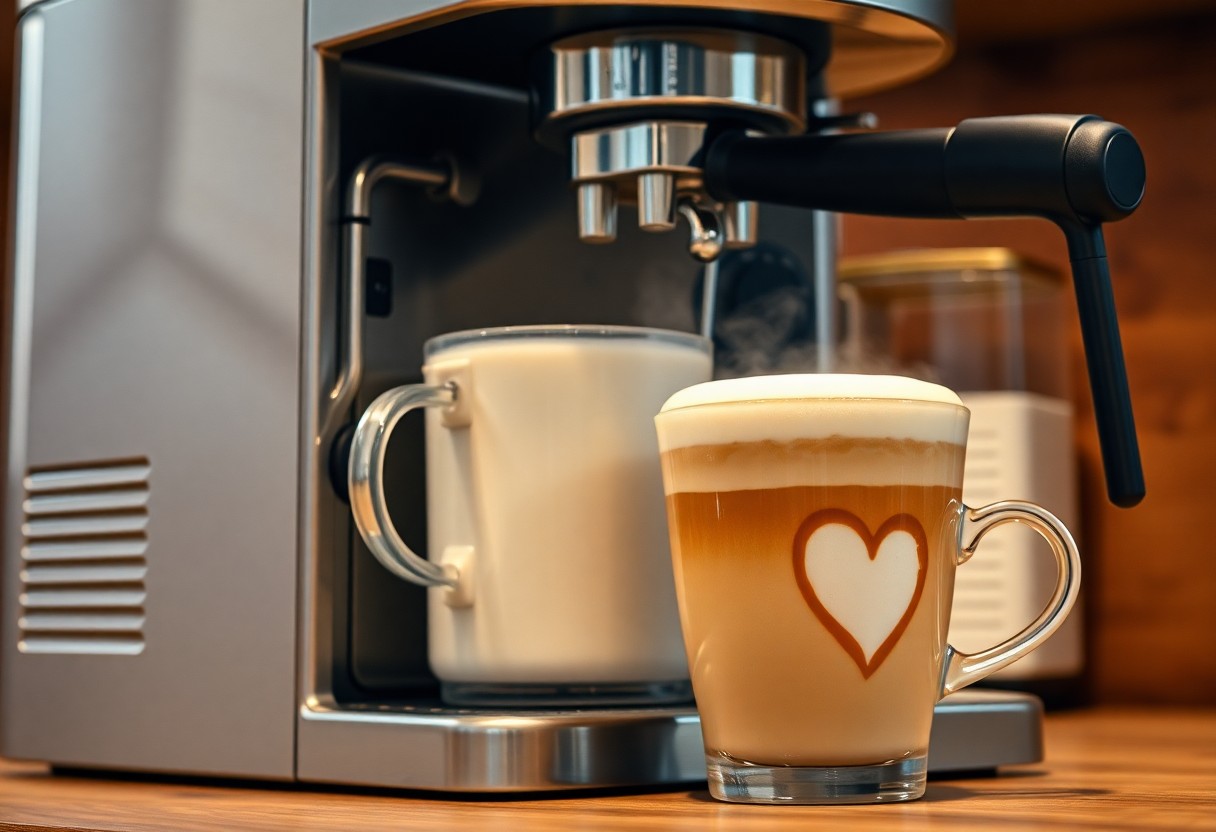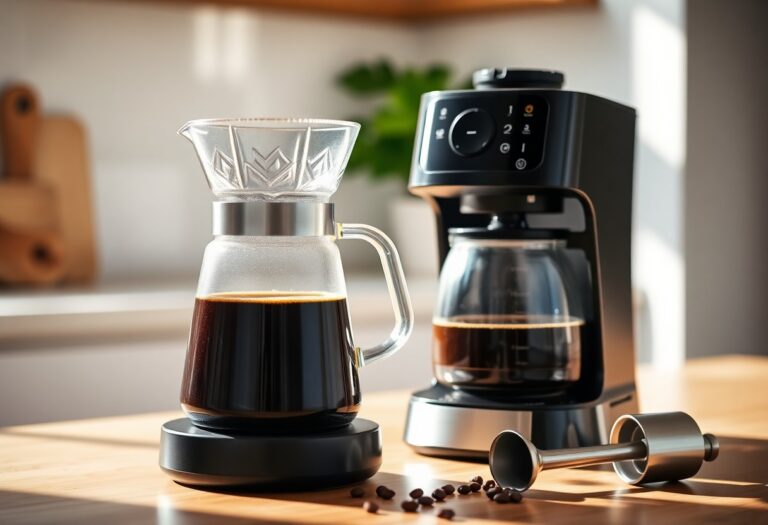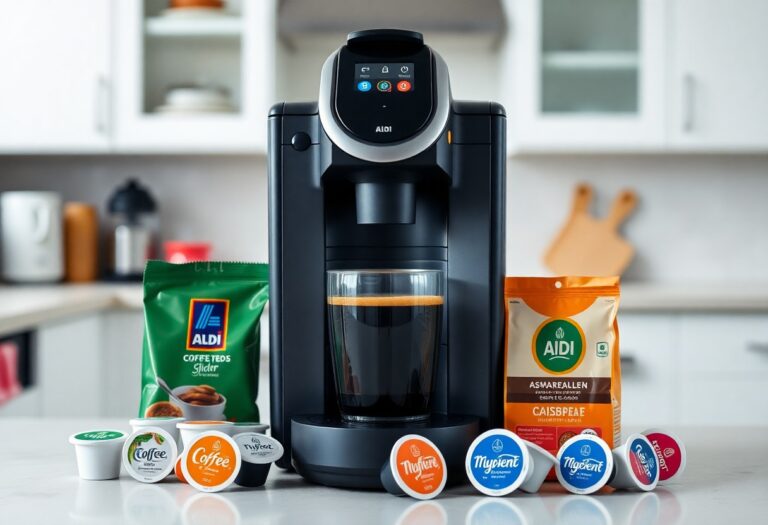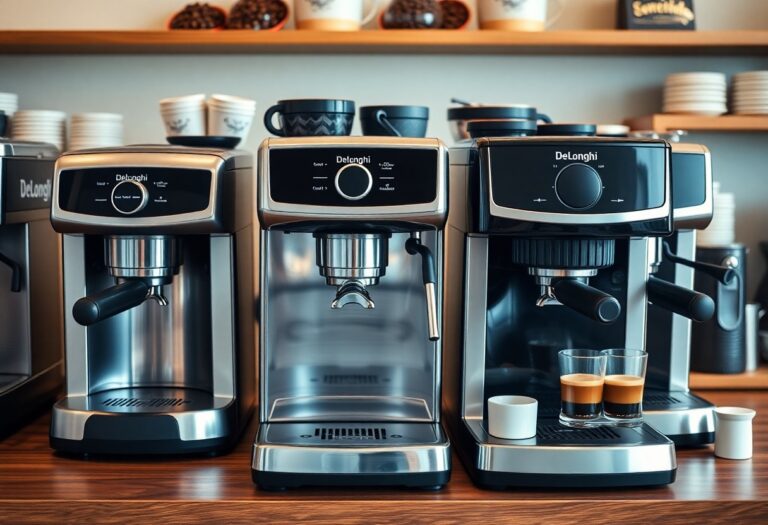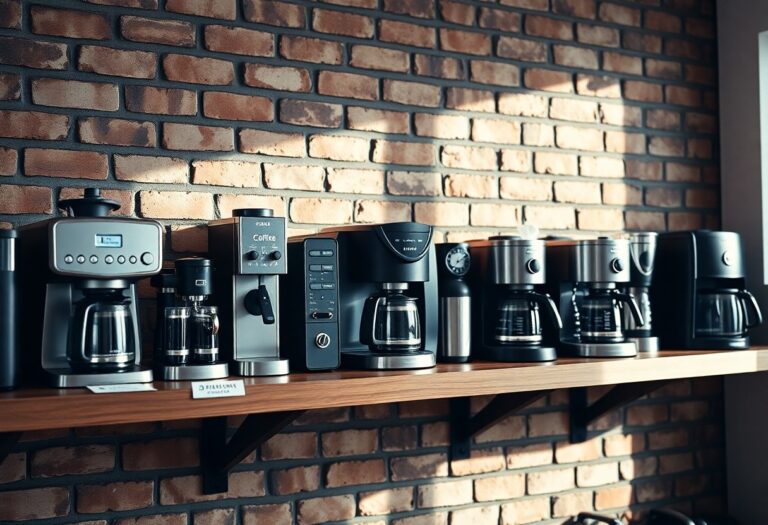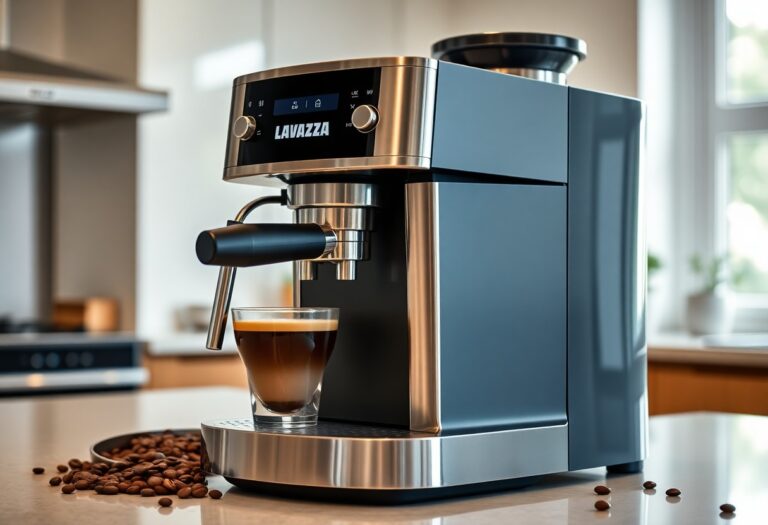What Coffee Machine Makes Lattes – Milk Frothing Capabilities
Over the years, finding the right coffee machine that allows you to create café-quality lattes at home has become increasingly important. As you explore your options, it’s necessary to consider milk frothing capabilities, which play a significant role in achieving that creamy texture you crave. From automatic espresso machines with built-in steam wands to manual frothers, your choices can greatly influence your latte experience. This guide will help you navigate the best machines available, ensuring you enjoy that perfect latte every time.
Key Takeaways:
- Look for machines with built-in milk frothers, as these offer the convenience of frothing milk directly.
- Manual frothing options give you more control over temperature and texture, ideal for customizing your latte experience.
- Espresso machines that feature steam wands provide a professional-grade frothing experience, enhancing the overall quality of lattes.
- Consider the milk frothing capacity of the machine; larger capacity enables you to make multiple lattes at once.
- Explore automatic models that do the frothing for you, streamlining the preparation process for busy mornings.
Unpacking Essential Milk Frothing Technologies
Exploring the intricacies of milk frothing technologies opens up an exciting world for coffee enthusiasts. Whether you’re a casual drinker or a dedicated barista, understanding these technologies helps to maximize your latte experience. Various machines cater to diverse preferences, providing options that range from manual to automatic frothing solutions. To find the Best Latte Machines in 2025, consider features that align with your frothing needs.
Steam Wands and Their Functionalities
Steam wands are a hallmark of traditional espresso machines, allowing you to create microfoam through a manual process. By inserting the wand into the milk and utilizing steam pressure, you can achieve optimal aeration and temperature control. This method gives you the freedom to craft personalized texture and temperature for your lattes, making it a favorite among baristas.
Automatic Frothing Systems: Ease vs. Control
Automatic frothing systems simplify the milk frothing process with just the push of a button. These machines often come with built-in milk carafes that heat and froth milk to your desired consistency without requiring hands-on attention. Though they offer unmatched convenience, you may sacrifice a degree of control over the frothing process and milk texture compared to traditional steam wands.
The appeal of automatic frothing systems lies in their user-friendly design, making it easy for anyone to whip up café-style lattes at home. Machines equipped with these systems allow customization through settings for different froth densities and milk temperatures. However, the trade-off comes with a lack of fine-tuning; while these machines produce reliable results, creative coffee aficionados may find the absence of manual control limiting. Finding a balance between ease and control is key, and knowing your preferences will steer you toward the right machine.
The Latte-Making Powerhouses: Comparing Machine Types
Comparing the different types of machines that can brew a perfect latte is crucial. Each machine’s design influences its milk frothing capabilities significantly. Here’s a quick breakdown of the top options:
| Machine Type | Milk Frothing Capability |
|---|---|
| Manual Espresso Machines | High control over frothing |
| Super-Automatic Machines | Fully automated frothing |
| Capsule Machines | Convenient but limited |
| Stovetop Espresso Makers | Requires separate frother |
| French Press | Manual frothing technique |
Knowing these differences can guide you in choosing the best machine for your latte-making endeavors.
Manual Espresso Machines for Latte Art
For those who revel in the art of latte-making, manual espresso machines offer unmatched control. You can adjust the pressure and duration of the steam wand, enabling you to create beautiful microfoam crucial for latte art. The learning curve may be steep, but the rewarding results make the effort worthwhile.
Super-Automatic Machines: Convenience Redefined
Super-automatic machines bring the café experience to your kitchen with a push of a button. They seamlessly grind, brew, and froth milk to perfection. Many models feature customizable settings, allowing you to adjust the milk texture and temperature effortlessly, paving the way for an ideal latte every time.
Super-automatic machines often come equipped with various presets, enhancing their versatility. With just one touch, you can switch from a classic latte to a rich cappuccino. For busy mornings, these machines deliver consistent results while minimizing your time spent in the kitchen, making them a favorite for many coffee enthusiasts.
Capsule Machines: A Quick Fix for Latte Lovers
Capsule machines cater to those who prioritize speed and ease above all else. Simply insert the capsule, press a button, and voilà – your latte is ready. These machines often come with an integrated milk frother, delivering a creamy texture without much hassle.
The limited flavor selection of capsule machines may not satisfy every coffee purist, but they shine in convenience. Ideal for busy lifestyles, these machines take the guesswork out of brewing, allowing you to enjoy latte variations without needing extensive coffee knowledge or skills.
The Importance of Temperature and Pressure in Frothing
A well-structured latte begins with the right temperature and pressure control during frothing. Ideal frothing occurs when milk is heated to between 140°F and 155°F, leading to a creamy texture and sweet flavor profile. If the milk gets too hot, it can scorch, leading to undesirable flavors. Additionally, the pressure applied during frothing helps incorporate air, necessary for achieving that silky microfoam. For a deeper probe the best equipment, check out The Best Coffee Machines With Milk Frothers (My Top 7).
Ideal Frothing Temperatures for Different Milk Types
| Milk Type | Ideal Temperature (°F) |
| Whole Milk | 140-150 |
| Skim Milk | 140-145 |
| Almond Milk | 130-140 |
| Soy Milk | 140-145 |
| Oat Milk | 140-150 |
- Whole milk achieves the best froth with its higher fat content.
- Skim milk froths easily but may require extra attention to avoid overheating.
- Almond milk typically requires a slightly lower temperature due to its properties.
- Soy milk often needs a delicate touch to create stable froth.
- Oat milk’s creamy consistency works well at higher temperatures.
The right temperature not only alters the milk’s taste but also impacts its frothing ability, meaning that you need to adjust based on the type you choose. The right technique improves your frothing outcomes significantly. The
The Role of Pressure in Achieving Perfect Microfoam
Sufficient pressure is critical in creating microfoam, which is characterized by tiny, stable bubbles that contribute to a velvety texture. High-pressure steam wands or automatic frothing systems work by forcing steam through the milk, introducing air and creating froth. The ideal pressure for frothing is typically between 1.2 and 1.5 bars. This balance between steam and milk allows for the formation of a consistent microfoam, necessary for a well-crafted latte.
Understanding the relationship between pressure and frothing is key to mastering latte art. Too little pressure can result in a lack of froth, while excessive pressure may produce overly large bubbles, compromising the silky finish. You want a stable microfoam that clings to your espresso, creating a harmonious marriage of milk and coffee. By fine-tuning both temperature and pressure, you elevate your coffee experience, leading to café-quality lattes right at your kitchen counter.
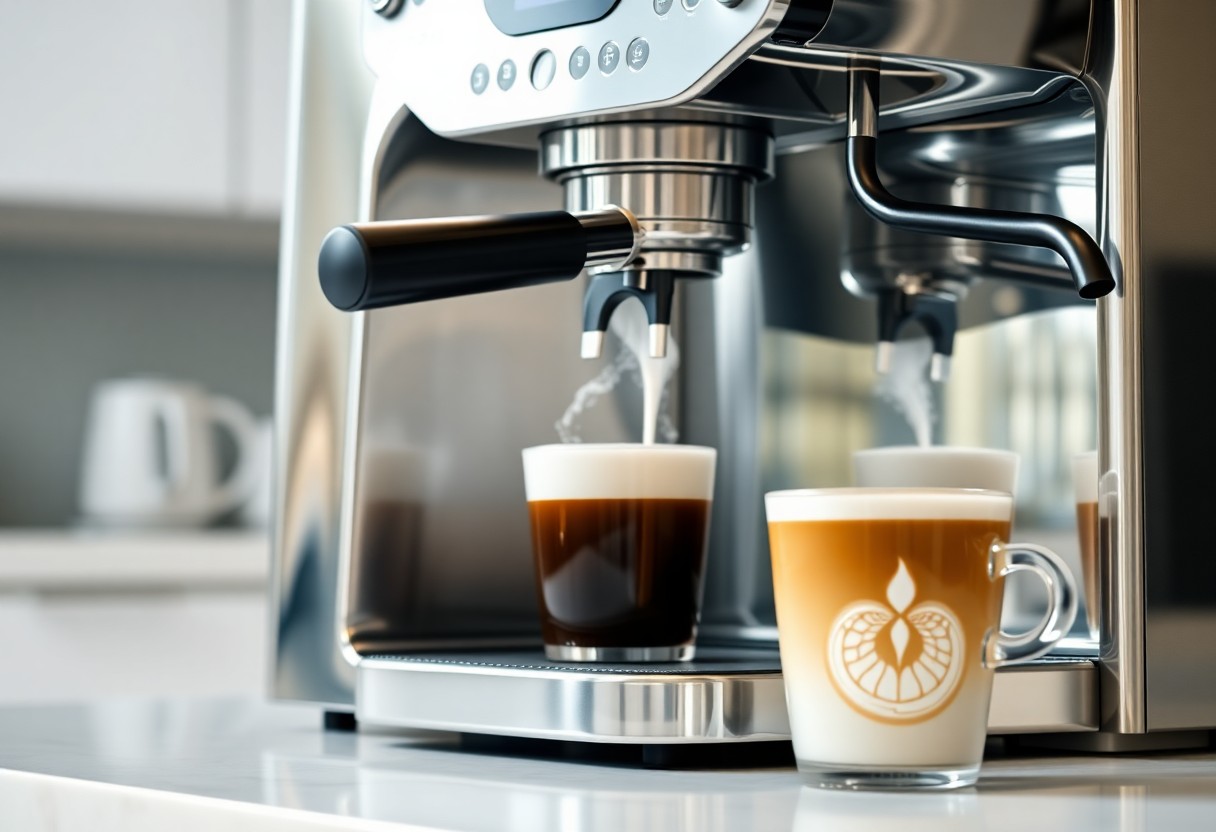
Exploring Barista-Level Features in Home Machines
Home coffee machines have come a long way, enabling you to recreate café-quality lattes in the comfort of your kitchen. With barista-level features, you can master the art of milk frothing and customize your drinks to suit your unique tastes.
Advanced Milk Texturing Options
Your latte can benefit immensely from machines equipped with advanced milk texturing options. These features allow you to achieve the perfect microfoam, vital for enhanced flavor and aesthetics. Look for machines that offer:
- Steam Wands: Adjustable steam wands help achieve diverse textures.
- Temperature Control: Set specific temperatures for various milk types.
- Auto-Frothing: Machines that automatically froth milk for you.
- Pressure Control: Fine-tune the pressure based on your desired froth.
Programmable Settings for Personal Preferences
Programmable settings allow you to customize your latte-making experience effectively. Adjust the strength, milk froth, and temperature with ease to meet your individual preference, making each cup distinctly yours.
With these programmable features, you can design beverages that suit your daily cravings and specific occasions. Many machines allow you to save multiple user profiles, ensuring that anyone in your household can enjoy their ideal cup of coffee with just a touch of a button. From mild to intense flavors, you have the power to recreate your favorite lattes to perfection day after day.
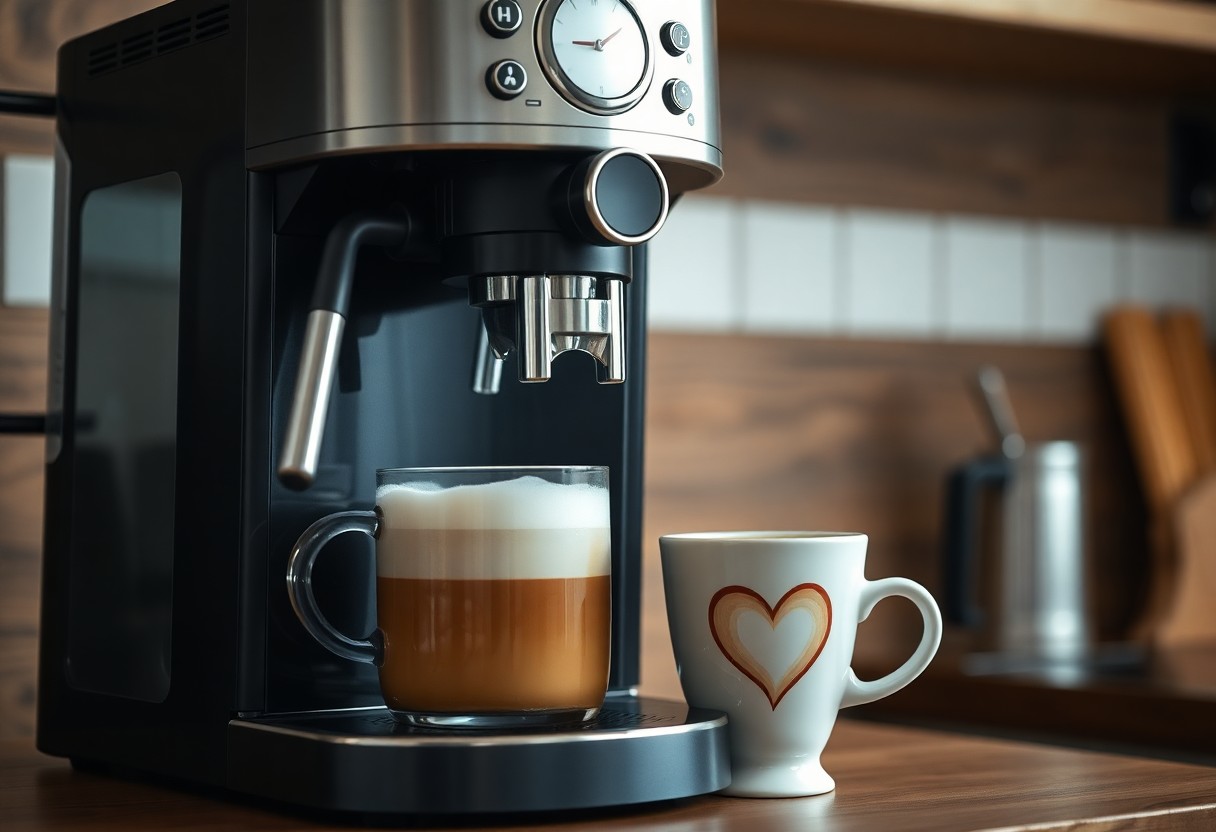
Budgeting for Quality: Finding the Right Latte Machine
Balancing your budget while ensuring a quality latte machine can be a challenge. Prioritizing features that enhance your espresso and frothing experience allows for an informed decision without overspending. Consider machines that offer reliability and functionality within your budget range while seeking user reviews for insights on performance and durability. Brands like Breville and De’Longhi provide various options to suit different financial capacities, ensuring you can achieve café-style lattes at home.
Cost-Benefit Analysis of Various Models
Evaluating the cost and benefits of different latte machines requires careful consideration of your brewing needs and desired features. Some budget-friendly models may lack vital functionalities like advanced milk frothing or consistent temperature control, leading to subpar drinks. On the other hand, investing in premium machines might come with higher upfront costs but can save you money in the long run by reducing café visits.
Long-Term Investment vs. Short-Term Satisfaction
Deciding between a long-term investment and short-term satisfaction can significantly impact your coffee journey. Selecting a machine that meets both your present needs and anticipates future ones provides a more rewarding experience. High-quality machines often incorporate durable components, ensuring that they remain functional and efficient over time, which translates into better lattes and savings from not needing replacements.
A long-term investment in a latte machine pays off by consistently producing delicious drinks, while cheaper models might lead to frequent replacements or repairs. Your decision should factor in daily use versus limited occasional use. If you envision making lattes a regular part of your daily routine, opting for a robust machine will save you both time and money in the future, ultimately rewarding you with expertly crafted beverages right from the comfort of your kitchen.
Final Words
Now that you’ve explored the various coffee machines that excel in milk frothing capabilities, you can confidently choose one that suits your needs for crafting perfect lattes. Look for features like steam wands or automatic frothers, as these will enhance your brewing experience and bring café-quality drinks into your home. With the right machine, you’ll be able to enjoy rich, creamy lattes tailored to your taste, making every coffee break a delightful experience.
Q: What type of coffee machine should I choose for making lattes with milk frothing capabilities?
A: For making lattes, you should consider an espresso machine that features a built-in steam wand or milk frother. This will allow you to create the rich espresso base and properly froth the milk. Options range from manual machines, which give you more control, to automatic machines that handle frothing for you, making it easier to achieve the perfect texture.
Q: How much milk do I need to froth for a latte?
A: Generally, a standard latte is made with one shot of espresso and approximately 6-8 ounces of steamed milk. For frothing, about 1 cup of milk is recommended to allow for expansion when texturing. This will give you the right balance of milk foam on top of your espresso for that classic latte experience.
Q: Can I froth non-dairy milk for my lattes?
A: Yes, most coffee machines with frothing capabilities can froth non-dairy milk such as almond, soy, oat, or coconut milk. However, the results may vary depending on the type of milk used, as some non-dairy alternatives froth better than others. For the best results, use barista blends specifically formulated for frothing.
Q: Are there coffee machines that can automatically froth milk for lattes?
A: Yes, there are several espresso and coffee machines equipped with automatic milk frothers. These machines can steam and froth milk with the push of a button, offering convenience for those who prefer a quick process. Look for machines with integrated systems that allow you to customize the milk’s foam texture and temperature.
Q: What features should I look for in a milk frother for lattes?
A: When choosing a milk frother for lattes, look for features such as adjustable temperature settings, different frothing modes for textures (like thick foam or microfoam), and ease of cleaning. Some frothers come with a pitcher or jug for precise pouring, while others have a detachable frothing wand, making maintenance simpler.

